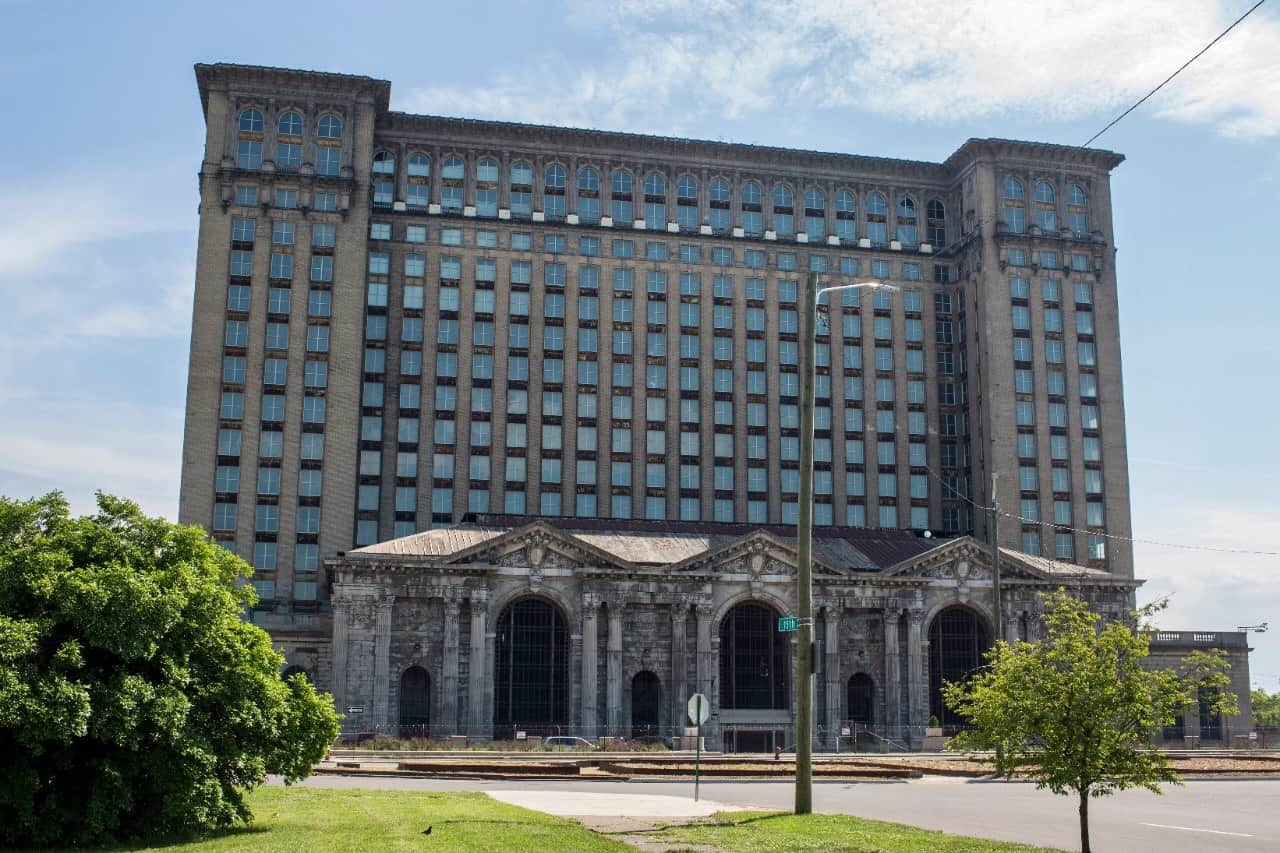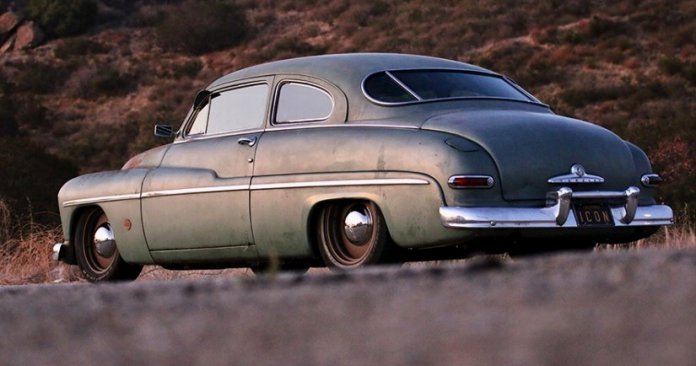(During the month of October, we’re publishing a series of stories on the “futureproofing” of collector cars through the use of electric powertrains, which also are coming to seemingly every automaker’s vehicle lineup. As always, your comments are welcome, and if you have converted a vintage vehicle to electric power, we’d love to share your story with others. Contact us at [email protected].)
“Are classic cars still ‘classic’ if converted to EVs?” asked the headline this week on TNW, the tech-oriented website owned by The Financial Times, the highly respected European business newspaper.
“YES, yes they are.” the website answered its own question.
“If there’s one topic that’s likely to elicit strong feelings among vehicle aficionados, it’s the conversion of a classic car into an electric vehicle,” the article begins, noting, “During the past few years, there’s been a flurry of electrified classic vehicle unveilings.”
But, the story continues, “not everyone’s happy about it and many among the antique car enthusiasts find the conversion to electricity, well, a sacrilege.”
The same argument might have been made years ago regarding the resto-mod, the now-popular and well-accepted process of taking a vintage vehicle, maintaining its exterior appearance, but installing a modern powertrain, updated suspension and braking systems to make the driving smoother and safer, and such creature features as air conditioning and Bluetooth.
Basically, such changes keep the classic appearance but make the vehicles much more usable, more enjoyable for owners and occupants.
And should there be the desire to put things back the way they were, it’s a simple matter of storing the original bits for reinstallation.
It’s the same with the recent phenomenon of doing an electro-mod, except instead of a petroleum-fueled new internal combustion engine, an electric powertrain is used, thus assuring the vehicles can continue to be driven even if internal combustion engines are banned.

The author of the TNW article offers a review of objections to any such modification of classic vehicles and even notes, “Antique cars are testaments to past human engineering ingenuity, and the combustion engine is an essential part of that. As with any historic artifact, to replace any part of its core elements, means that you reduce its authenticity.
“But,” the article continues, “do you also diminish its historical value?”
To answer that question, the article shares a photograph of historic buildings in Amsterdam, those famous tall but thin 5- and 6-story homes that have national heritage status.

“It’s illegal to make changes to their exterior design,” the article reports, noting as well that, “they can’t be demolished.”
But there’s another photo in the article, and this one shows the modern interior of the residences in those buildings, which have such modern conveniences as electricity for lighting, cooking, television, computers, heating and cooling.
“But to be livable and functional in the modern era, their interior has undergone various restorations,” TNW notes. “Does this reduce their historic value or character? No, it certainly doesn’t.”
Consider the National Register of Historic Places in the United States as well, where buildings are preserved but can be equipped with such modern interior conveniences as electricity and air conditioning.
Or consider that in Detroit, Ford is in the final phase of its preservation of the historic Michigan Central train station, which will become the base for its Corktown Campus and electric vehicle design and engineering teams as well as shopping and dining opportunities for employees and the public as well.
The TNW article continues:
“The same principle can be applied to classic cars. As much as the buildings of Amsterdam, antique vehicles need to be reinvented in order to fit into the future, which — let’s face it — is electric.
“We can keep the classics in a museum and admire them for their heavy heritage, but this way we simply fossilize them as a part of our past, as an artifact that has no relevance in the world we live in.
“Instead, the conversion of such vehicles into EVs can actually bring them from the past into everyday use, actively preserving their memory rather than burying it.”






Part of the fun of old cars is bringing the old power plants to life. Imagine a Stanley Steamer that doesn’t require starting a fire and getting the boiler up to temperature.
Then it’s no longer a Stanley Steamer anymore than a picture of one.
Using historic housing and land which is real property verses personal property is not a comparison. With housing there is the land value and the cost of building replacement value new and then depreciation for actual condition. Then there are 18 variables that swing positive and negative for location, condition,architectural design, age, living area difference, etc.
There is no comparison to real property verses personal property.
Real Estate Broker Owner
Certified Residential Appraiser
Electro-Mod……
What about guy’s like me that have owned our cars for many years and put put countless hours building our cars in our own home shops and cant afford to do the change over, or have the time, physical and mental ability, to make it work properly, are we supposed to just go away? I for one will be driving mine to the final showdown when it finally comes and they can bury me in it, Steve Miller
Articles spewing from Silicon Valley have no relevance to real world car guys. If you want to put an electric motor in a 63 spit window, let’s just see you try. That will happen when the United States turns to communism.
Well were almost there with the present Admin.
Excellent point! Just how expensive is it to switch to a electric drive train? Will gas stations all over the country not have any gas to sell?
What you pull up to a random electric power slot and swipe a credit card then wait? How long will it take to construct power stations all over the country from corner to corner?
Hell I will be dead long before that is completed.
Kwayne, I believe the reason were having this conversation is because we are already turning to communism, where’s the freedom that was the embodiment of hot-rodding from the beginning, build it like YOU want it. and if you ever put that elec. motor in that 63 we’ll all have to hunt you down and take away your man card
Electric conversion is no different/better/worse than restomod or ‘hot rod’. There are plenty of 32 Fords, tri-five Chevys, etc. out there that have few, if any, parts from 1932 or 1955,56, 57. 350 crate motors, disc brakes, newer transmissions, rack and pinion steering, abound. It’s your car, do what you want. Just remember that the changes you make could result in a vehicle that may be more difficult to sell down the road. The further you move away from ‘original’, the more you are going to have to find someone with your same taste who will appreciate your modifications. That being said, it appears that more and more people seem to be gravitating towards comfort and ‘drivability’ than originality.
I say no longer a classic if converted to electric. However, if it’s converted to electric they deserve all the benefits of new electric cars.
I’m fine with electric mods. And the folks who aren’t – well, you also better not support putting anything than the original engine in your car. You’re either a purist or you aren’t..
If I was able to modify any of my cars to ev, I will, soon as in guns, government may disappear bullets or gasoline, what would you do then?
Classic cars are already the Cadillac of Theseus. Repair and replacement of worn out components over time has made it so that little remains of the original item. Cars win Concourse with about 20% original parts.
It’s simple. Resto-mods aren’t classics, Hot rods aren’t classics. Classics are just that. They are the way the maker intended. The in convenient truth is on the EV crowd. Zero ICE engines will not change the Climate change game, period. In fact we will have waste time, talent and treasure on a flawed idea. Unfortunately, people will still suffer food insecurity, cities will continue to socially and economically degrade, and we will be right where we are today. Climate Change is real and has been since the beginning of earth time or more understandable concept the last ice age. Plants and animals have learned to adapt. Why can humans? Does anyone believe that we can turn a Climate dial ? Only idiots.